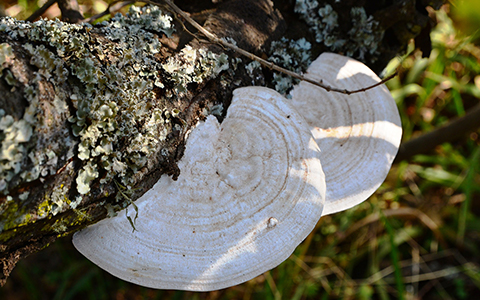
Need help identifying a potential tree disease? Recognizing when your tree is diseased will help you take prompt action to prune, treat, or call in an arborist or professional to halt the disease’s progression.
72tree.com gathered the following information to help you identify tree diseases and how to effectively treat your tree to prevent further decline or death.
Diseased trees can physically manifest their ailments in multiple ways. Some common indicators of a diseased tree include:
• Low hanging dead or dying branches (lacking bark and have no leaves)
• Dropping dying or dead branches
• Weak, V-shaped branch unions, where two branches have grown together
• An excessively thick or dense canopy that could easily break
• Excessive wilting
• Leaf problems (spots, holes, odd colored, or deformed leaves)
• Fuzzy or moldy patches
• Water sprouts (water shoots) grow on the trunk or roots
Note: An alarming sign of advanced tree disease is when a tree starts to lean. This is an urgent problem requiring immediate professional attention.
The following tree diseases and their host species may require a professional assessment to determine an effective treatment plan. For an arborist in Alpharetta, we can help, or find a local arborist by visiting treesaregood.org/findanarborist. A third option is to collect samples of the tree and have them analyzed at your local university extension.
Consider the following 10 tree diseases:
1. Dutch Elm Disease (DED) (Ophiostoma ulmi) – A fungal disease that infects elm trees, causes rapid decline and death and is spread by bark beetles.
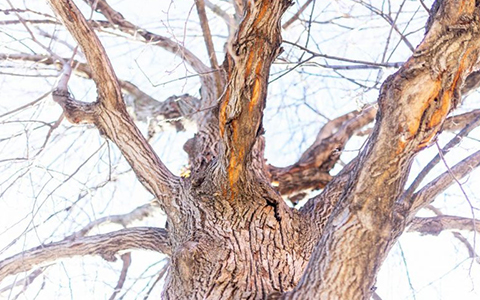
Treatment: When caught early, DED infections can be pruned out, and the tree can be protected by fungicides. Several DED-resistant elm varieties are available.
2. Oak Wilt (Ceratocystis fagacearum) – A fungal disease that affects oak trees and is spread through root grafts and sap-feeding, boring beetles.
Treatment: Trees infected with or have died from oak wilt should be completely removed, properly treated, and destroyed to prevent spore mat development. These treatments may include debarking, chipping or splitting, drying, and burning the wood.
3. Apple Scab (Venturia inaequalis) – A fungal disease that affects apple trees and causes leaf spotting and premature leaf drop.
Treatment: Scab control for edible apple and crabapple trees includes captan, lime-sulfur, and powdered or wettable sulfur applications.
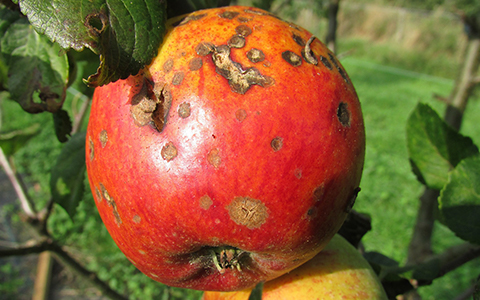
4. Pine Wilt Disease (Bursaphelenchus xylophilus) – A bacterial disease that affects pine trees and is spread by pinewood nematodes and pine sawyer beetles.
Treatment: Once infected with pinewood nematodes, pesticides are no longer effective. Once a tree is infected, there is no cure for pine wilt, and dead trees left in the landscape become sources of nematodes and pine sawyer beetles. Diseased trees should be destroyed by burning, chipping, or burying.
5. Chestnut Blight (Cryphonectria parasitica) – A fungal disease affecting chestnut trees, causing cankers on the trunk and branches.
Treatment: Chestnut trees with blight cankers can be treated and often cured with mud packs applied to each canker.
6. Black Knot (Dibotryon morbosum) – A fungal disease that affects cherry and plum trees, causing black, warty growths on the branches.
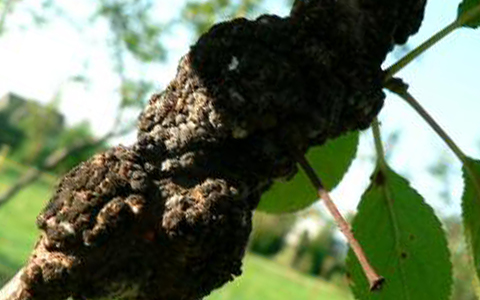
Treatment: Black knot can be controlled by removing all knots and swellings by pruning 3 to 4 inches below the knot during the dormant season. Where infections occur on larger branches, excise infected tissue down to healthy wood.
7. Cedar Apple Rust (Gymnosporangium juniperi-virginianae) – A fungal disease affecting apple trees but is spread by cedar trees.
Treatment: Fungicides with Myclobutanil are most effective in preventing rust. Spray trees when buds first emerge until spring weather becomes consistently warm and dry.
Tip: Fungicides are only effective when applied before leaf spots or fruit infections appear.
8. Fire Blight (Erwinia amylovora) – A bacterial disease affecting apple and pear trees, causing wilting and blackening of the branches. There is no cure for fire blight, only control.
Treatment: Once an infected tree is removed, the fire blight bacteria are also removed. You can safely plant another apple or pear tree in its place (choose a fire blight-resistant variety).
9. Verticillium Wilt (Verticillium dahliae and Verticillium albo-atrum) – A fungal disease that affects a wide range of trees and causes foliage chlorosis and wilting. There is no effective treatment for verticillium wilt.
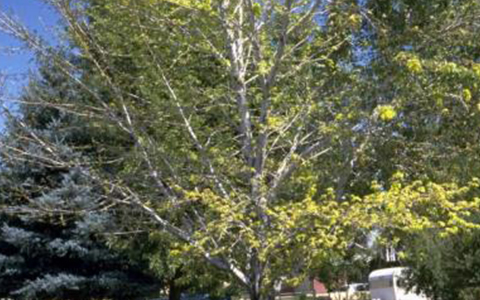
Treatment: Prune out affected branches and dispose of them immediately. Do not use infected wood for chips for landscape mulch.
Tip: Sanitize all pruning equipment before moving to another tree to prevent the spreading of the disease.
10. Sudden Oak Death (SOD) (Phytophthora ramorum) – A fungal disease affecting oak trees, causing leaf spots, cankers, and rapid death.
Treatment: Reliant Systemic Fungicide is a phosphonate compound injected into the tree or mixed with a surfactant and sprayed on the trunk for absorption through its bark.
Note: This treatment is not a cure but can help protect trees from infection and effectively suppress disease progression in early infection stages.
In this article, you discovered information to help you identify and treat several tree diseases before they cause your tree’s rapid decline or death.
Knowing how to identify when your tree is diseased will help you spring into action with effective treatments or get professional help.
Your inability to detect or identify when your tree is diseased can lead to rapid decline, death, and catastrophic personal or structural damage when it collapses or falls on your property.
Sources:
extension.umn.edu/plant-diseases/dutch-elm-disease
dec.ny.gov/docs/lands_forests_pdf/oakwiltusda.pdf
portal.ct.gov/CAES/Fact-Sheets/Plant-Pathology/Protecting-Chestnut-Trees-from-Blight
extension.umaine.edu/ipm/ipddl/publications/5091e/
fs.usda.gov/wildflowers/plant-of-the-week/gymnosporangium_juniperi-virginianae.shtml
ipm.ucanr.edu/PMG/PESTNOTES/pn7414.html
invasivespeciesinfo.gov/terrestrial/pathogens-and-diseases/sudden-oak-death
Image credit: mndaily.com
Image credit: web.extension.illinois.edu
Image credit: hortnews.extension.iastate.edu